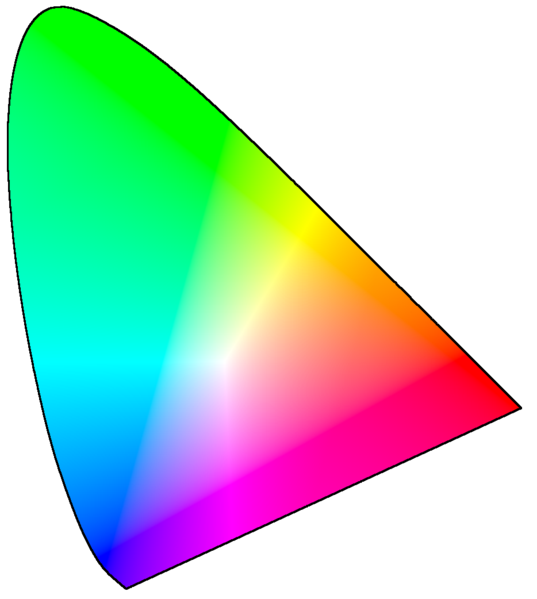
One of the question which comes to you through your path down photography lane would be color space. I will attempt to summarize and assist you in the decision making process. For the inquiring minds the reference links provided below should point you into the right direction to further your quest for knowledge. Now that we got that aside lets get down to business.
What is the difference between sRGB and aRGB?
The difference is in the gamut. Think of it this way sRGB contains less gamut information with regards to color while aRGB contains more gamut information.
So what does gamut have to do with me?
Having more or less of gamut would impact you only when your images are converted from RGB to CMYK for printing. During the conversion process the more gamut information you have the more accurate your colors would be. If you are not sending your images for CMYK printing you do not need to worry about it.
But what if I dont print my images?
You can then stick to sRGB color space.
Okay so now I understand but what do you recommend?
RAW shooter - either color space settings on your camera would not matter much because RAW essentially preserve all the color your camera captures. You can then depending on what you want to use your image for convert the images to JPEG in either colorspace.
JPEG shooter - I am a big believer in having all the information I need before selecting what I dont need that is why I shoot RAW because at the end of the day you may not be fortunate enough to have a second chance. Having said that, we know aRGB contains the most gamut information so if you shoot JPEG use aRGB and during your workflow process save another copy as sRGB that way you never need to worry about the lack in gamut if you ever need to send your images for CMYK printing in the future.
About sRGB
sRGB is a standard RGB (Red Green Blue) color space created cooperatively by HP and Microsoft for use on monitors, printers, and the Internet. It is by far the most commonly used RGB color space, particularly in consumer grade digital cameras. However, given its nature, sRGB limited gamut leaves out many highly saturated colors that can be produced by printers or in film, and thus is not ideal for some high quality applications.
About Adobe RGB (aRGB)
Adobe RGB color space is an RGB color space developed by Adobe Systems in 1998. It was designed to encompass most of the colors achievable on CMYK color printers, but by using RGB primary colors on a device such as the computer display. The Adobe RGB color space encompasses roughly 50% of the visible colors specified by the Lab color space, improving upon the gamut of the sRGB color space primarily in cyan-greens.
Reference:
1. RGB Color Space
2. sRGB Color Space
3. Adobe RGB Color Space
4. Gamut
5. Color Theory
6. Aperture: Color and gamma settings for print and web
What is the difference between sRGB and aRGB?
The difference is in the gamut. Think of it this way sRGB contains less gamut information with regards to color while aRGB contains more gamut information.
So what does gamut have to do with me?
Having more or less of gamut would impact you only when your images are converted from RGB to CMYK for printing. During the conversion process the more gamut information you have the more accurate your colors would be. If you are not sending your images for CMYK printing you do not need to worry about it.
But what if I dont print my images?
You can then stick to sRGB color space.
Okay so now I understand but what do you recommend?
RAW shooter - either color space settings on your camera would not matter much because RAW essentially preserve all the color your camera captures. You can then depending on what you want to use your image for convert the images to JPEG in either colorspace.
JPEG shooter - I am a big believer in having all the information I need before selecting what I dont need that is why I shoot RAW because at the end of the day you may not be fortunate enough to have a second chance. Having said that, we know aRGB contains the most gamut information so if you shoot JPEG use aRGB and during your workflow process save another copy as sRGB that way you never need to worry about the lack in gamut if you ever need to send your images for CMYK printing in the future.
About sRGB
sRGB is a standard RGB (Red Green Blue) color space created cooperatively by HP and Microsoft for use on monitors, printers, and the Internet. It is by far the most commonly used RGB color space, particularly in consumer grade digital cameras. However, given its nature, sRGB limited gamut leaves out many highly saturated colors that can be produced by printers or in film, and thus is not ideal for some high quality applications.
About Adobe RGB (aRGB)
Adobe RGB color space is an RGB color space developed by Adobe Systems in 1998. It was designed to encompass most of the colors achievable on CMYK color printers, but by using RGB primary colors on a device such as the computer display. The Adobe RGB color space encompasses roughly 50% of the visible colors specified by the Lab color space, improving upon the gamut of the sRGB color space primarily in cyan-greens.
Reference:
1. RGB Color Space
2. sRGB Color Space
3. Adobe RGB Color Space
4. Gamut
5. Color Theory
6. Aperture: Color and gamma settings for print and web






No comments:
Post a Comment